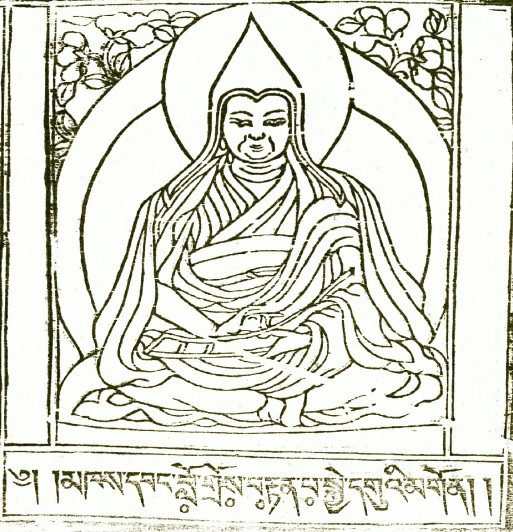 “The Art of Dying is quite as important as the Art of Living,” writes editor W.Y. Evans-Wentz in his preface to The Tibetan Book of the Dead. An ancient Buddhist text, The Tibetan Book of the Dead, or the Bardo Thödol, is a guide for the deceased as he or she journeys through the 49 days after the moment of death—the interval of time between death and rebirth. During this time, the deceased is instructed to resist the temptations of the material world, or Sangsara, in order to achieve enlightenment, or Nirvana, thereby breaking the cycle of reincarnation and bringing an end to suffering. But if the individual is not prepared for enlightenment (which is often the case) the text also teaches how to best prepare oneself for the life to come.
“The Art of Dying is quite as important as the Art of Living,” writes editor W.Y. Evans-Wentz in his preface to The Tibetan Book of the Dead. An ancient Buddhist text, The Tibetan Book of the Dead, or the Bardo Thödol, is a guide for the deceased as he or she journeys through the 49 days after the moment of death—the interval of time between death and rebirth. During this time, the deceased is instructed to resist the temptations of the material world, or Sangsara, in order to achieve enlightenment, or Nirvana, thereby breaking the cycle of reincarnation and bringing an end to suffering. But if the individual is not prepared for enlightenment (which is often the case) the text also teaches how to best prepare oneself for the life to come.
The Bardo Thödol is also a guide for the living, whom it prepares by showing what to expect after death. Only by knowing how to die properly can one learn to live properly as well. The Art of Dying and the Art of Dying, given the cycle of death and rebirth, are two sides of the eternally revolving coin.
“Only by knowing how to die properly can one learn to live properly as well.”
I do not expect this brief description to be entirely clear; it certainly isn’t to me. But For your aid and convenience, Evans-Wentz has provided a generous amount of introductory material—prefaces, introductions, as well as a remarkable psychological interpretation by the eminent mid-twentieth century psychologist C.G. Jung. Read all of them. They provide the Western novice (such as me) with a necessary and intelligible explanation of the terms and ideas in the Bardo Thödol. In fact, I found these initial guides more pleasurable to read than the actual book itself. They bring to the spiritual text a variety of interpretations and perspectives that make it more relevant to the Western reader. Without these basic understandings, the Tibetan Book of the Dead would be ever more mysterious and obscure than it already is, even with an understanding of its underlying philosophy and symbolism.
“They provide the Western novice (such as me) with a necessary and intelligible explanation of the terms and ideas in the Bardo Thödol. “
Due to this difficulty, the book is not to be read once and then forgotten on the shelf. To truly understand it, one would need to spend years studying and unraveling its concepts and symbols—as have the editor and translator. These scholars have achieved their understanding only after decades of study, along with their advantage of working with actual gurus in the Himalayas.
Despite its esoteric meanings, mystifying imagery and puzzling concepts, reading this book is worth the struggle; it leads the Western reader to a deeper understanding not only of how some Eastern cultures experience and imagine death, but also, by comparison, how our own culture approaches the end-of-life experience. Massively influential to both Eastern and Western cultures—one will find in Western theology and philosophy many echoes of this Buddhist doctrine—this sacred text soars above any judgement of thematic import and aesthetic quality. Even so, the book is filled with beautiful ideas and images, such as the idea of reality as one great illusion, or the notion that the divine is only a projection of our consciousness—or, to turn this around, that our consciousness itself is divine.
“…the book is filled with beautiful ideas, such as the idea of reality as one great illusion…or that our consciousness itself is divine.”
In the end, the simple fact of this book’s survival across thousands of years can attest to its value, resilience and intrigue. It may be difficult and demand a lot of time and focus, but for these reasons W.Y. Evans-Wentz’s translation is incredibly rewarding to read.
More on Buddhism from SevenPonds:
- The Buddhist Philosophy of Reincarnation
- Funeral Rites in the Buddhist Tradition
- Bardo: a Sacred Belief in Tibetan Buddhism

 ”the Tibetan Book of the Dead” edited by John Baldock
”the Tibetan Book of the Dead” edited by John Baldock



 The Other Death in the Family
The Other Death in the Family

 The Healing Sound of Singing Bowls
The Healing Sound of Singing Bowls














